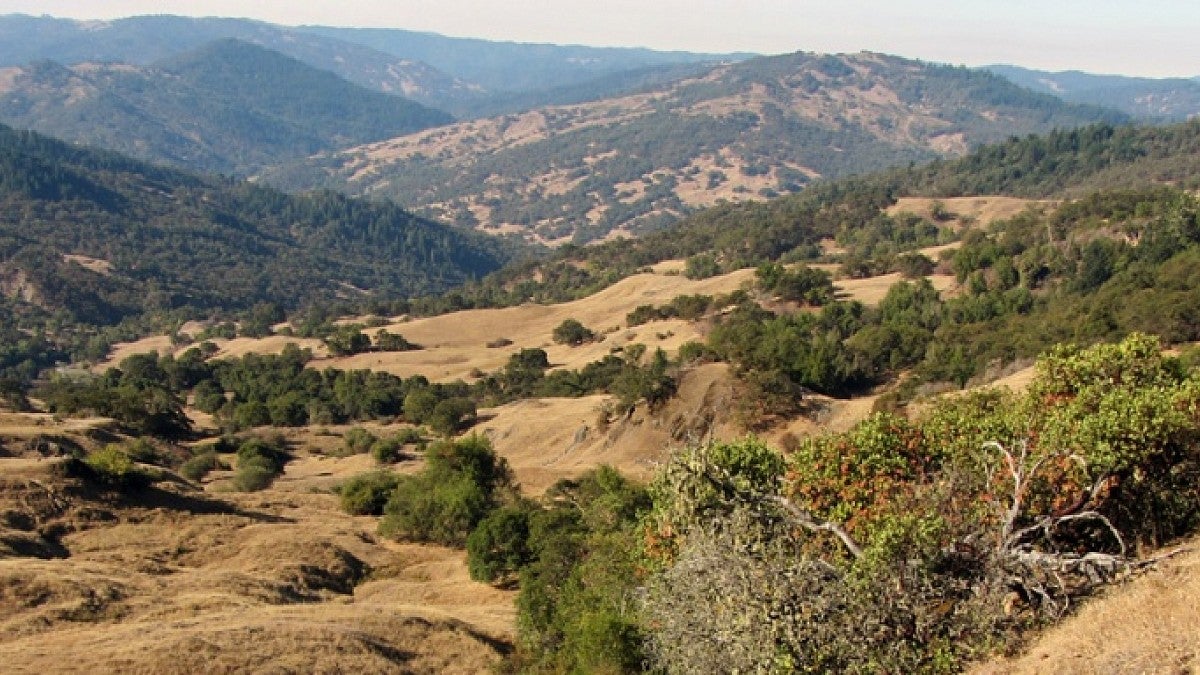Climate had little to do with the research, but it emerged as a telling factor after UO geologist Joshua Roering and postdoctoral researcher Georgie Bennett found themselves confused by new landslide data they had gathered.
In the project, Bennett had merged data from on-the-ground measurements, aerial photography, satellite imagery and satellite-radar imaging of 98 landslide formations in northern California's Eel River Basin. The more recent satellite data seemed at odds with the historical record on landslides' movements as tracked from 1944 to the turn of the century. Rocks atop the landslides, the satellite imagery showed, had barely moved in the last three years.
"We realized that this slowing down of the landslides was a massive signature of California's drought," said Roering, a professor in the UO Department of Geological Sciences. "Finding this was an accident. We didn't set out to connect our research to climate. We discovered this by being frustrated by the data."
The research is detailed in a paper accepted for publication in the journal Geophysical Research Letters. The findings, Bennett said, are important to scientists who monitoring landslides around the world.
From 2009 to 2015, the research team found, landslide movement had slowed twice by half of previous rates, based on data from the 10 most-scrutinized landslides during the project. Those years coincide with California's unprecedented drought.
"Landslides move highways and make things really difficult for engineers all over the western U.S., and all over the world," Roering said.
Rates of movement vary by the size and depth of individual landslides, Roering said, but, in general, movement had traditionally averaged "a few feet" annually. Small landslides are more sensitive to seasonal changes in rainfall and drought, while larger landslides more likely average out impacts from climate variability, the researchers found.
"The landslide outflows we studied are typical in many places in the world," said Bennett, now a postdoctoral researcher with the U.S. Forest Service and Colorado State University but soon headed to a faculty post at the University of East Anglia in England.
"This paper is important to helping understand how landslides respond to rainfall, and it provides data that should eventually help in terms of forecasting how landslides will respond to climate change," she said. "Smaller outflows are more sensitive to increasing or declining amounts of precipitation."
The study area covered an 86-square-mile stretch along the 200-mile-long river, which meanders through the coastal mountain range from just north of California's wine country to near Fortuna, where it meets the Pacific Ocean.
Data collection on such a scale had not been done before, Roering said.
The rocks and soil have dried substantially, based on groundwater data gathered at one location. The current lack of moisture, Roering said, means there is no longer lubrication that allows for movement.
This summer, his team, in collaboration with a team led by UO seismologist Amanda Thomas, will place some 80 small seismometers in various locations on one of the landslides. The project aims to locate the underlying water table.
"A question now is how much water will it take, and how long will it take to get water down the depths at the base of these sliding surfaces to reduce the friction and get them to start moving again," Roering said. "The site we will be instrumenting should help us better understand the structure and plumbing of landslides."
The data merged in the research came from manual measurements of trees riding on the surface of earthflows from 1944 to 2006 and from measurements obtained through high-resolution satellite imagery spanning 2009-2015. The latter data was validated using satellite remote sensing.
Former UO doctoral student Benjamin H. Mackey, Al L. Handwerger, a courtesy research associate in the Department of Geological Sciences, David A. Schmidt of the University of Washington and Benoit P. Guillod of the University of Oxford also part of the NASA-supported project.
— By Jim Barlow, University Communications


